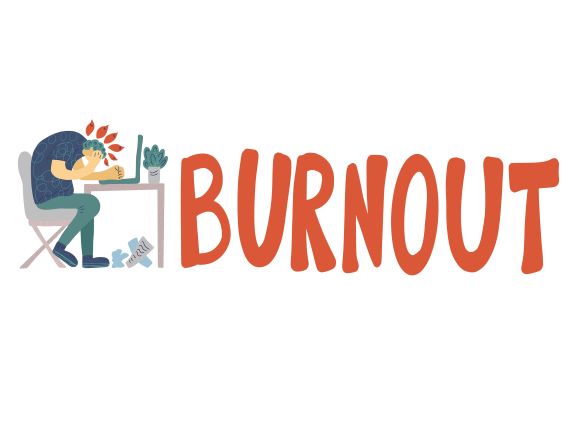5 Signs of Employee Burnout
 Publié le 6 November 2020
Publié le 6 November 2020
With burnout among employees increasing, it is important to know 5 signs of employee burnout in order to spot this condition and address it before it becomes even worse.
Employee burnout is very real and very serious. It is a major issue affecting more and more people working in all industries and job fields, with negative consequences for physical, mental and emotional well-being. This troubling trend was already on the rise, and now it appears the ongoing COVID-19 pandemic has only made the situation worse for many people. The signs of employee burnout must be acknowledged, understood, avoided and mitigated whenever possible.
What is Employee Burnout?
Everyone has had bad days at work, or even a bad week. Employee burnout, however, is not the same as having a few days of negative emotions while in the workplace.
According to the Mayo Clinic, employee burnout is “a special type of work-related stress — a state of physical or emotional exhaustion that also involves a sense of reduced accomplishment and loss of personal identity.”
Employee burnout is more than just feeling a little down for a day or two, rather it is a prolonged period of intense dissatisfaction and exhaustion that affect people physically, emotionally and mentally, including after they leave the workplace and go home. While there is no official medical diagnosis for employee burnout, it is an acknowledged and documented phenomenon. Organizations, company leaders and individuals must learn the risks and the signs of employee burnout. This will allow them to recognize if themselves or their coworkers are experiencing burnout, and offer whatever support and guidance
Burnout vs Depression
It is important to understand the difference between employee burnout and clinical depression. Burnout specifically originates as a result of workplaces stresses and pressure, while clinic depression is a complex condition with multiple causes, including brain chemicals. For people who may be prone to depression, employee burnout can certainly be a trigger and exacerbate the negative effects on a person’s emotional state.
If you think that you may be experiencing clinical depression, seek professional help and support right away. There are resources designed to help people living with depression receive the proper support and treatment. Do not feel hesitant or embarrassed to address issues related to your mental health. Every good workplace should have a plan and benefits to support the mental well-being of their employees, and company leaders have a responsibility to ensure that their workers know about these resources.
5 Signs of Employee Burnout
- Loss of fulfillment
- Exhaustion
- Mental fatigue
- Feelings of isolation
- Physical side effects
Loss of Fulfillment
Ideally, your job and your professional life are supposed to provide a sense of fulfillment. Having career goals and achieving them should make you feel proud and satisfied, as these are real rewards and an acknowledgment of the hard work you put into your job every day. For people experiencing employee burnout, however, there is often very little or no fulfillment to be gained from work.
If work is no longer fulfilling, it leads to people questioning their purpose and wondering if the work they do has any real purpose or impact, and possibly consider leaving their jobs. People want to feel that the work they do is important and impactful, and that the company they work for contributes to the overall good of society. The loss of fulfillment caused by employee burnout can make it very difficult for people to feel any sense of accomplishment or importance, no matter how impactful their work actually is.
Tiredness and Exhaustion
It’s normal to feel tired at work some of the time. Everyone has found themselves yawning in the office kitchen waiting for the coffee to finish brewing, or felt their eyes blink a little bit longer as the day starts to wine down. What is not normal is extreme tiredness and chronic physical exhaustion. Instead, it is one of the signs of employee burnout.
Exhaustion is already too common in the workplace, with one survey finding that nearly half of all employees often feel exhausted at work. This is one reason it’s so important to take regular and extended breaks from work, especially for physically demanding jobs. These rest periods are vital for your body to rest and heal. For the millions of people now working partially or fully remote jobs, work breaks are still an important part of the day, and shouldn’t be skipped. This will only increase the likelihood of employee burnout.
Mental Fatigue
There are different types of exhaustion which can affect people in more ways than just physically. Mental fatigue, one of the signs of employee burnout, is another type of exhaustion and tiredness with serious ramifications for your daily life. The US National Institute for Health defines mental fatigue resulting from prolonged mental load as “a failure to complete mental tasks that require self-motivation and internal cues… [which] decreases sufferers’ work or study efficiency in daily life.”
The prolonged mental load that causes fatigue can take on the form of overwork, stress and anxiety. These form habits of thinking that are very difficult to break, and can quickly be compounded with uncertain conditions. With the ongoing COVID-19 pandemic, it has been reported that 4 in 10 Canadians are experiencing worse mental health as result of the crisis. This of course makes it more difficult for people to maintain good mental well-being in all aspects of daily life, including work. Mental fatigue already affected many workers, and now organizations must be extra aware of these symptoms as people either return to work or continue to remote work arrangements, and make it known that there are resources available for those experiencing this type of employee burnout.
Feelings of Isolation
During periods of extreme stress, the ability to connect and emphasize with others is one the first things to suffer. A positive and effective work environment and company culture is one built on respect, support and collaboration. No successful company is built in a vacuum, it takes a team of committed and dedicated people working together to build something strong. One of the signs of employee burnout is an increased sense of isolation, making it much more difficult to collaborate with colleagues.
With many people working remotely, feelings of isolation among workers have already increased. Burnout can cause people to withdraw, and isolate themselves even more, further exacerbating the problem. Feeling alone and isolated can be intensely distressing, with people feeling as those simply cannot reach out or don’t have the mental and emotional energy to do so. Companies must maintain open communication with employees, especially when working remotely. Workers have to support each other, and form supportive relationships that will allow them to realize that their colleagues may be struggling with feelings of isolation as a result of employee burnout.
Physical Side Effects
The stress and anxiety from employee burnout can manifest itself in a variety of physical side effects, aside from previously mentioned exhaustion. These side effects include:
- Lack of sleep and insomnia
- Headaches and migraines
- Indigestion and nausea
- Rashes and skin irritation
- High blood pressure and heart disease
- Lowered immune system and susceptibility to illnesses
These ailments may seem like inconveniences, but when they become a chronic experience as result of employee burnout they can be debilitating. Chronic insomnia, for instance, can wreak havoc on physical, mental and emotional well-being, and increased blood pressure can contribute to life-threatening conditions such as heart attacks and strokes. The physical signs of employee burnout can have severe impact on bodily health, especially as if the burnout goes unaddressed.
A healthy and happy workforce is vital to the success of any company. Moreover, caring for the well-being of people is simply the right thing to do. Organizations, business leaders and individuals must be aware of 5 signs of employee burnout in order to recognize it in their colleagues and themselves. It is a serious problem affecting too many people in the workplace, and it must be acknowledged and addressed in order to support those experiencing employee burnout.
Please note: always contact qualified healthcare professionals if you feel that you may be suffering from issues related to physical, emotional and mental well-being.







